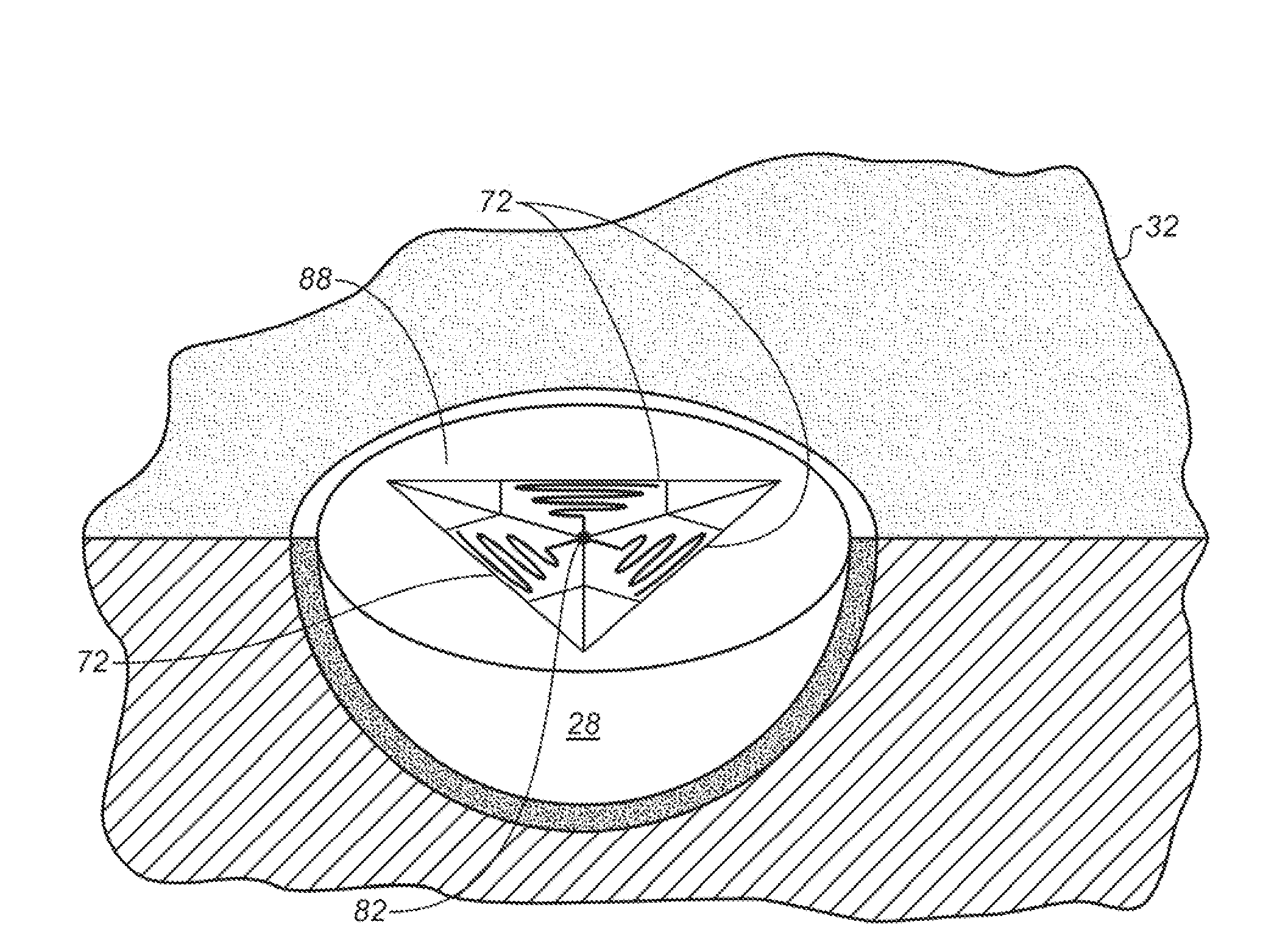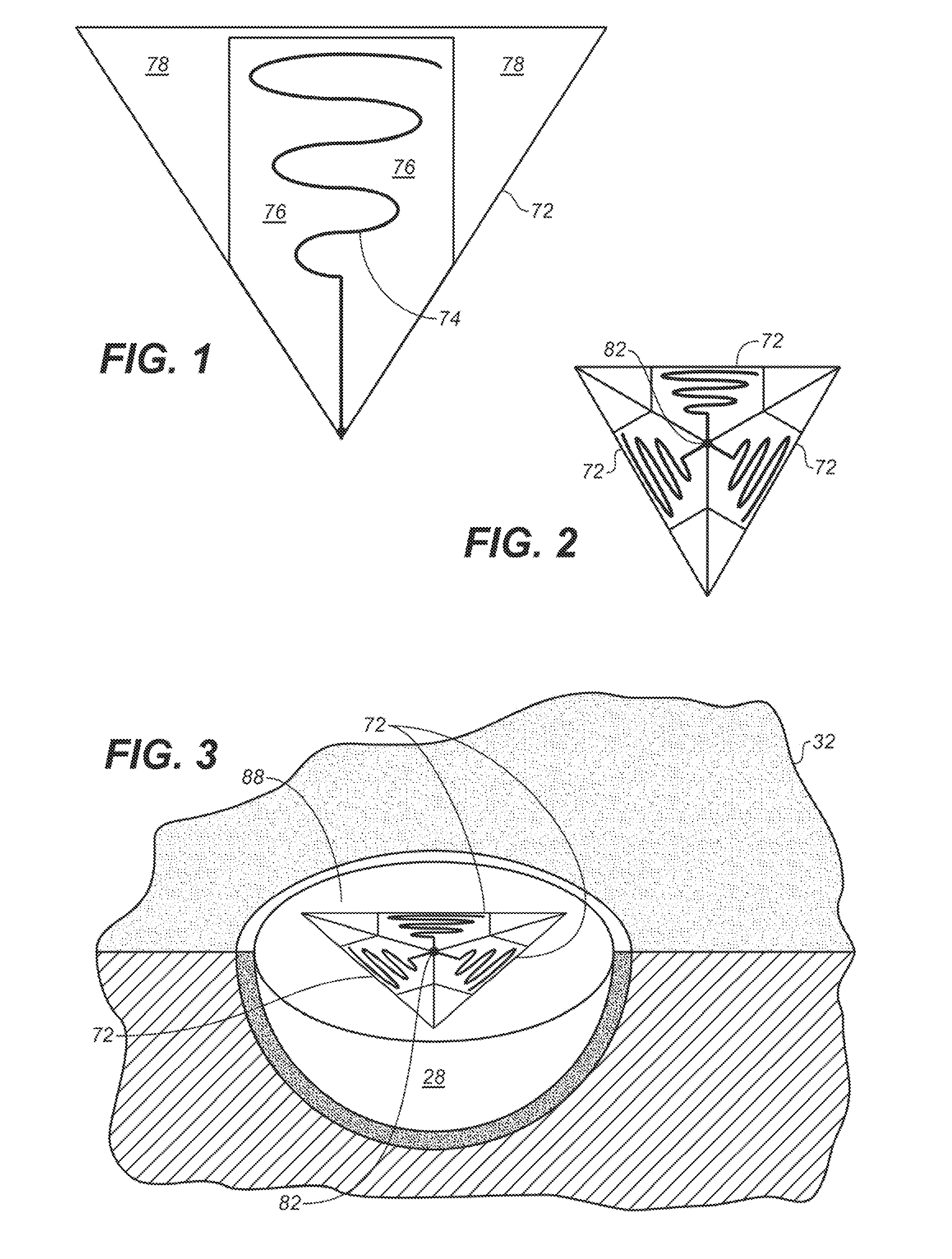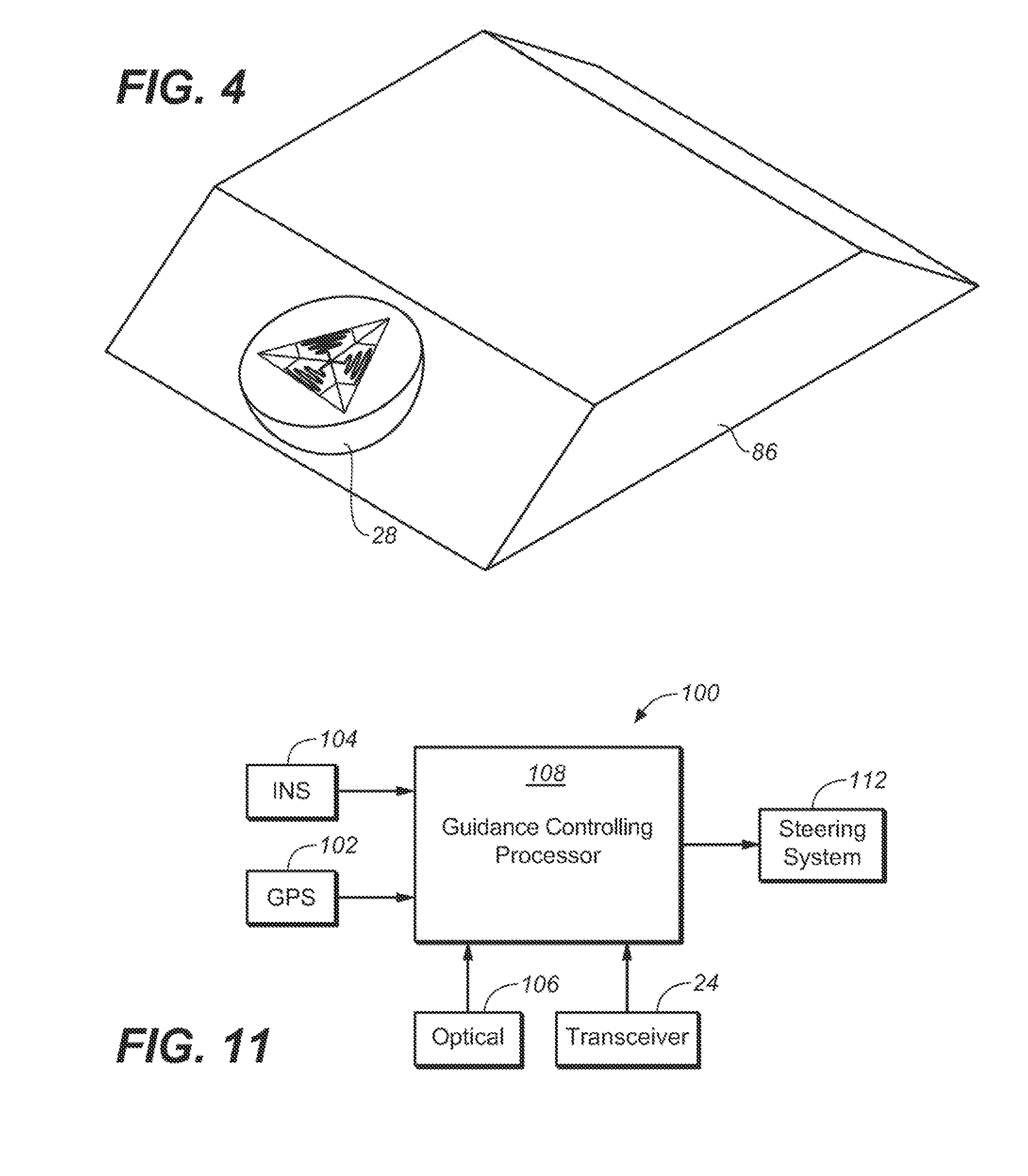Course guidance for a self-driving vehicle
a self-driving vehicle and guidance system technology, applied in the direction of antennas, instruments, antenna details, etc., can solve the problems of not being able to install a long public road, the requirement of powered transmitters, and not being able to meet the requirements of long public roads, so as to improve the performance and safety of self-driving vehicles.
- Summary
- Abstract
- Description
- Claims
- Application Information
AI Technical Summary
Benefits of technology
Problems solved by technology
Method used
Image
Examples
Embodiment Construction
[0040]FIG. 6 depicts a self-driving vehicle 22 having a transceiver 24 in accordance with the present disclosure mounted thereon. The transceiver 24 projects a steered, pencil-shaped transmitted microwave beam, indicated by a dashed arrow 26 in FIG. 6, ahead of the self-driving vehicle 22 toward a corner reflector 28 implanted in a road 32. As depicted by a curved, dashed arrow 34 in FIG. 5, the transceiver 24 sweeps the transmitted beam from side-to-side across the road 32 in front of the self-driving vehicle 22. As depicted in FIG. 6, movement of the self-driving vehicle 22 along the road 32, indicated by an arrow 36 in FIG. 6, combined with sweeping of the pencil-shaped transmitted beam from side-to-side across the road 32 in front of the moving self-driving vehicle 22 causes the transmitted beam to intermittently impinge upon corner corner reflectors 28 secured to the road 32. When the transmitted beam impinges on a corner reflector 28, the corner reflector 28 echoes a portion o...
PUM
 Login to View More
Login to View More Abstract
Description
Claims
Application Information
 Login to View More
Login to View More - R&D
- Intellectual Property
- Life Sciences
- Materials
- Tech Scout
- Unparalleled Data Quality
- Higher Quality Content
- 60% Fewer Hallucinations
Browse by: Latest US Patents, China's latest patents, Technical Efficacy Thesaurus, Application Domain, Technology Topic, Popular Technical Reports.
© 2025 PatSnap. All rights reserved.Legal|Privacy policy|Modern Slavery Act Transparency Statement|Sitemap|About US| Contact US: help@patsnap.com



